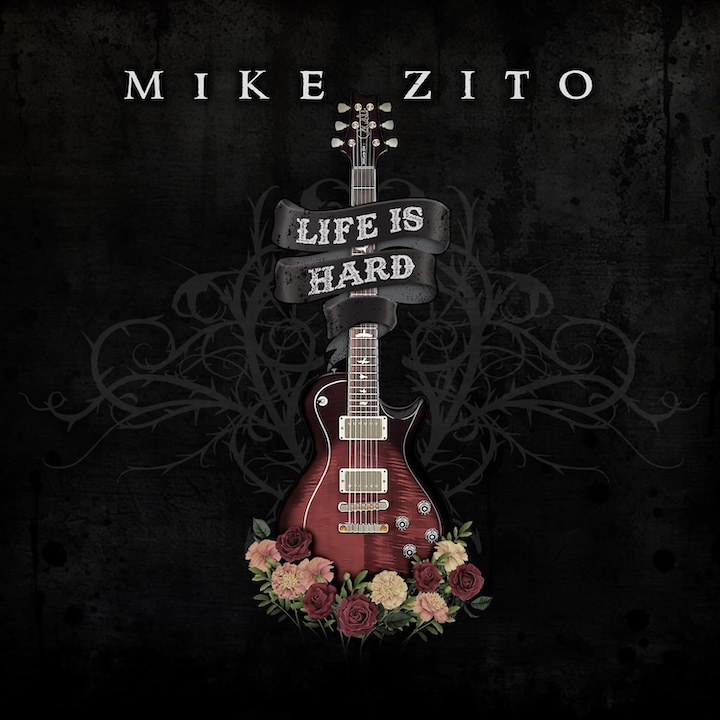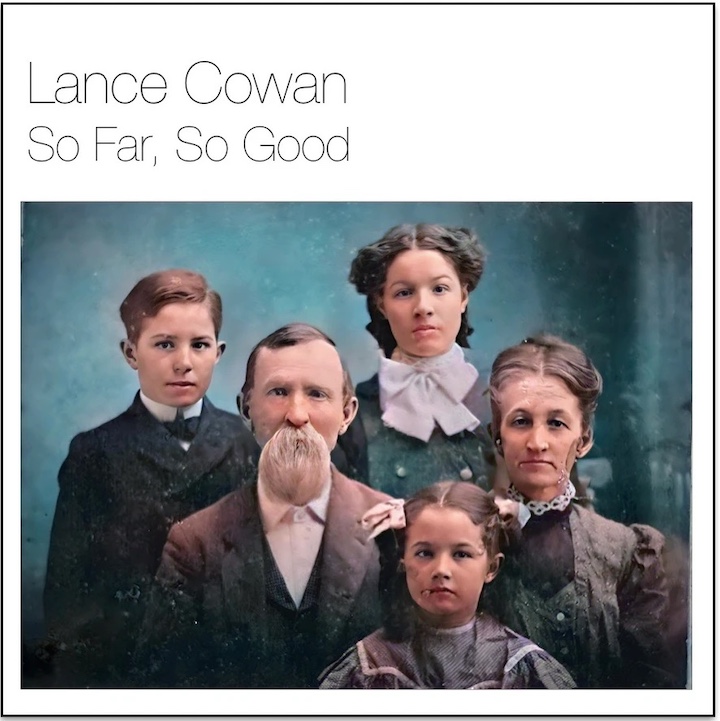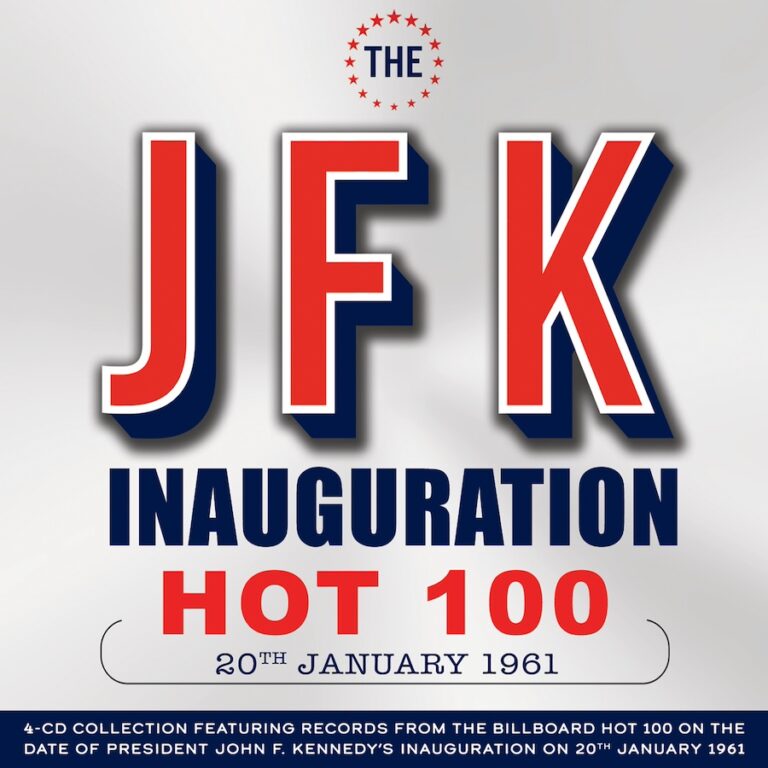According to conventional wisdom, rock experienced a fallow period from around the time we lost Buddy Holly in January 1959 – “the day the music died,” according to Don McLean’s “American Pie” – until Bob Dylan and the Beatles caught on about five years later. A new four-CD set that focuses on 1961’s music includes plenty of tracks that explain why people see this period that way, but also many that prove great records were being made during this era.
The set is part of a series of collections that each present songs from Billboard’s Top 100 in a particularly significant time. The Heartbreak Hotel Top 100, for example, features the songs that charted in the week when Elvis Presley’s first single for RCA went to No. 1, while last year’s American Bandstand: US Top 100 5th August 1957 offers hits from the week when Dick Clark’s influential TV show began airing nationally.
Called The JFK Inauguration: Hot 100: 20th January 1961, the new anthology collects music from the week when President John F. Kennedy took office. It features all the songs that made Billboard’s chart that week except for six that were unavailable for licensing. Even many of the numbers from the chart’s upper reaches will be familiar to oldies fans because they scored higher in prior or subsequent weeks. But there are more than a few obscurities here – songs that never made it into the Top 40.
The four-CD collection, which comes with a booklet that includes a 12,000-word essay, presents the tracks in the order they appeared on the charts, starting at the top. You don’t have to get past the first few numbers to sense what a strange time this was, as mainstream pop aimed at older listeners bumped against the burgeoning world of rock. Bert Kaempfert’s “Wonderland by Night” instrumental was in the No. 1 position, and the top five also embraced two other wordless examples of what many would deem elevator music: Ferrante and Teicher’s “Theme from Exodus” and Lawrence Welk’s “Calcutta.” Joining these tracks in the Top 5, however, were Elvis Presley’s “Are You Lonesome Tonight” and Rosie & the Originals’ “girl group” gem, “Angel Baby.”
Strange bedfellows like these help to make JFK Inauguration a fascinating listen, and the anthology is filled with evidence of other ways in which the music world of 1961 differed from what we hear today. You’ll notice, for instance, that only a few of the songs were written by their performers and that pop vocalists predominated. Instrumentals were also popular, with more than a dozen making this list.
Imitation was as common as innovation in this era, with many artists seeking to capitalize on the success of other performers’ hits. In the week of JFK’s inauguration, for example, pianist Floyd Cramer made the Top 10 with his self-penned instrumental, “Last Date,” while Lawrence Welk had a minor hit with the same song and both Skeeter Davis and Joni James scored with “My Last Date (with You),” which added lyrics to Cramer’s music. Also on the chart were three very similar versions of the “Wonderland by Night,” all of which made the top 20: Kaempfert’s aforementioned chart-topper, plus a reading by Louis Prima and a vocal rendition by Anita Bryant.
So-called “answer songs” offered another way to ride the coattails of a hit. Presley’s “Are You Lonesome Tonight” prompted three such numbers on the same chart: Jeanne Black’s “Oh How I Miss You Tonight” and two versions of “Yes, I’m Lonesome Tonight,” one by Dodie Stevens, who is better known for “Pink Shoelaces,” and one by jazz singer Thelma Carpenter.
As noted earlier, there’s enough fluff in this anthology to explain why many rock fans dismiss this era – inane pop confections like Johnny Tillotson’s “Poetry in Motion” and Frankie Avalon’s “Puppet Song”; puerile novelties like Buzz Clifford’s “Baby Sittin’ Boogie”; MOR vocalists such as Patti Page, Anita Bryant, and Andy Williams; and numbers by the likes of Welk and Mantovani that sound like Muzak.
But this collection also reminds us of how much terrific music was being made during this time, some of which was even penned by the performers. For example, the program features the great Roy Orbison’s “I’m Hurtin’,” which he co-wrote; and Smokey Robinson and the Miracles’ “Shop Around,” which Robinson and Berry Gordy composed. Also here are such rock classics as Dion’s “Lonely Teenager”; the Drifters’ “I Count the Tears,” which was written by the prolific team of Doc Pomus and Mort Shuman; and Gary U.S. Bonds’ “New Orleans.”
In addition, the chart for January 20, 1961, featured fine “girl group” hits, such as “A Thousand Stars,” by Kathy Young & the Innocents, and sublime doo-wop numbers, among them the Capris’ “There’s a Moon Out Tonight,” the Shells’ “Baby Oh Baby,” and the Chimes’ “Once in a While.” Some of the non-rock stuff was terrific, too: Etta James’s moody reading of “At Last,” the Harry Warren/Mack Gordon standard, is a vocal tour de force, for instance; also memorable are Sam Cooke’s self-penned “Sad Mood” and Ray Charles’s “Ruby.”
A new day was dawning – with John F. Kennedy’s inauguration and with songs such as these.
Also Noteworthy

Mike Zito, Life Is Hard. Blues rock singer, songwriter, and guitarist Mike Zito is as prolific as he is talented: just in the past two years, he has released four records, among them an excellent live double album called Blues from the Southside, a studio set called Resurrection, and two CDs with labelmate Albert Castiglia. Of this latest offering, Zito says, “My wife Laura and I planned this idea of pouring my heart out in music after her death from cancer,” and the record certainly reflects that.
There are some understandably bleak lyrics, such as on Rev. Gary Davis’s “Death Don’t Have No Mercy,” the sax-flavored “Lonely Man,” and Fred James’s title cut, where Zito sings, “Life is hard, and then you die.” But much of the music is exhilarating and Zito’s guitar work frequently dazzles. The 12-track program – which finds the artist backed by a muscular ensemble – includes two self-penned tracks plus covers of songs from contemporaries like Tinsley Ellis (“Dying to Do Wrong”) and Stevie Wonder (“Have a Talk with God”). There’s also a surprising (and successful) side trip into the pop world for a reading of the Guess Who’s “These Eyes,” one of two tracks that incorporate French horn.

Vanessa Peters, Flying on Instruments. This latest album from Dallas-based Vanessa Peters underscores what earlier releases like 2018’s Foxhole Prayers and 2021’s Modern Age suggested: she’s an underappreciated singer/songwriter whose recordings combine lyrics that make you think and feel with melodies that make you want to tap your foot and sing along.
The tracks on Flying on Instruments – which sound redolent of Lucy Kaplansky or a more rock-oriented Nanci Griffith, capture Peters in an introspective mood. In “Blind Curves,” for example, she sings, “Sometimes it’s so hard for me to get out of my own way,” while in “Better,” she confesses that “I’ve spent nearly all my life worrying about what other people think of me” and, in “Halfway Through,” she asks, “How much time did I waste?”

Lance Cowan, So Far, So Good. For over 30 years, Lance Cowan has worked as a public relations representative for dozens of musicians, including Jimmie Dale Gilmore, the Amazing Rhythm Aces, Chip Taylor, and Sam Bush. Now it turns out that Cowan is himself a talented singer whose tenor may remind you of John Denver. He’s also a deft songwriter, as evidenced by the self-penned and co-written material on this folk- and country-based debut album.
Highlights include “Fields of Freedom,” which Cowan wrote after watching Escape from Sobibor, a heart-wrenching film about a Nazi death camp; “The Letter,” which features guest vocalist Julie Lee; “A Place for Everything,” about Cowan’ packrat father; and “Blue Highway,” where the singer recalls growing up in a little Kentucky town near a tourist destination and seeing “most all the 50 states on vacationing station wagons’ license plates.”
Jeff Burger’s website, byjeffburger.com, contains five decades’ worth of music reviews, interviews, and commentary. His books include Dylan on Dylan: Interviews and Encounters, Lennon on Lennon: Conversations with John Lennon, Leonard Cohen on Leonard Cohen: Interviews and Encounters, and Springsteen on Springsteen: Interviews, Speeches, and Encounters.



